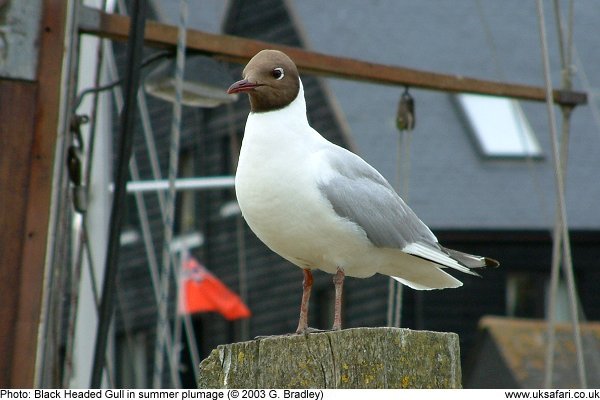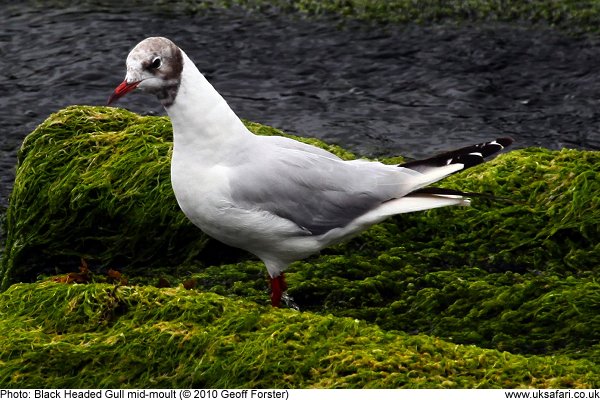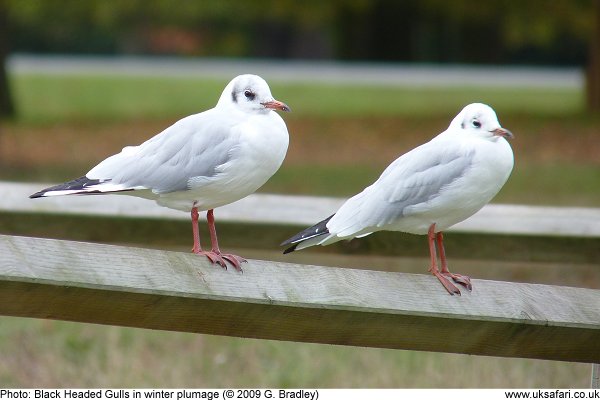 Black Headed Gulls
Black Headed Gulls
News > Black Headed Gulls >

If ever there was a poorly named bird this is it. In truth, the 'black head' of this bird is actually a chocolate brown colour, and it's only this colour during the breeding season. If you translate the Latin name for this bird Larus ridibundus you find it means 'laughing gull'. But I guess they couldn't call it a laughing gull, since that name was already taken by the Laughing Gull (Leucophaeus atricilla) of the Americas - which coincidentally has a black head!


At this time of year, and in fact for most of the year, Black-headed gulls become white-headed gulls, as the dark plumage on their head moults and is replaced with white feathers. All that remains of the dark coloured plumage are two small patches on each side of the head just behind the eyes.
We can only guess as to why they change colour, but it's most likely a throwback to a time when our winter landscape was much whiter and it helped the gulls avoid being seen by predators. Not too long ago, gulls and their eggs were a common source of food for us.
Although this is still our commonest inland gull, over the past twenty years numbers of Black-headed gulls have been falling and it is now an 'amber' listed bird.
More info at: UK Safari Black Headed Gulls Fact File

 Popular Pages
Popular Pages
Amphibians, Bats, Badgers, Beetles, Birds, Birds of Prey, Bumble Bees, Butterflies, Caterpillars, Creepy-Crawlies, Deadly Spiders, Dolphins, Dragonflies, E-Postcards, False Widow Spiders, Free Newsletter, Frogs, Fungi, Garden Spiders, Glow-Worms, Grey Squirrels, Hedgehogs, House Spiders, Ladybirds, Mammals, Marine Mammals, Moths, Owls, Reptiles, Spiders, Toads, Trees, Wildlife Hospitals
© Copyright 2017 G. Bradley - UK Safari | About Us | Links | Contributors



 Related Pages
Related Pages
